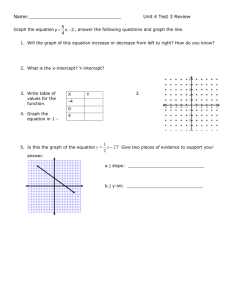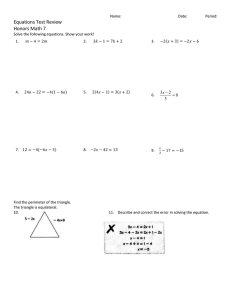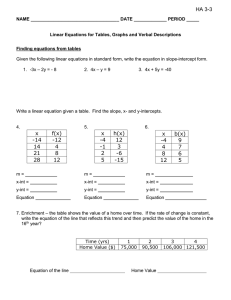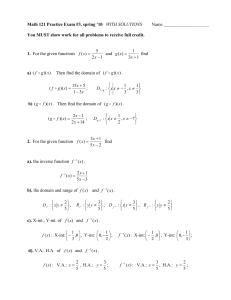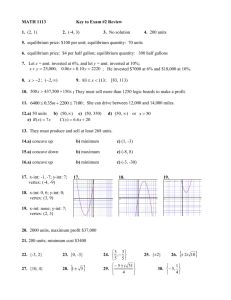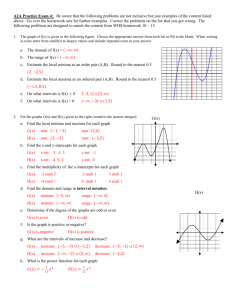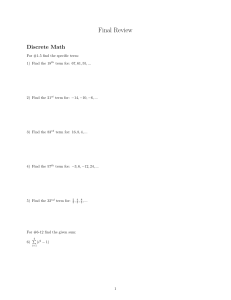Example: This is a Standard Maximization Problem
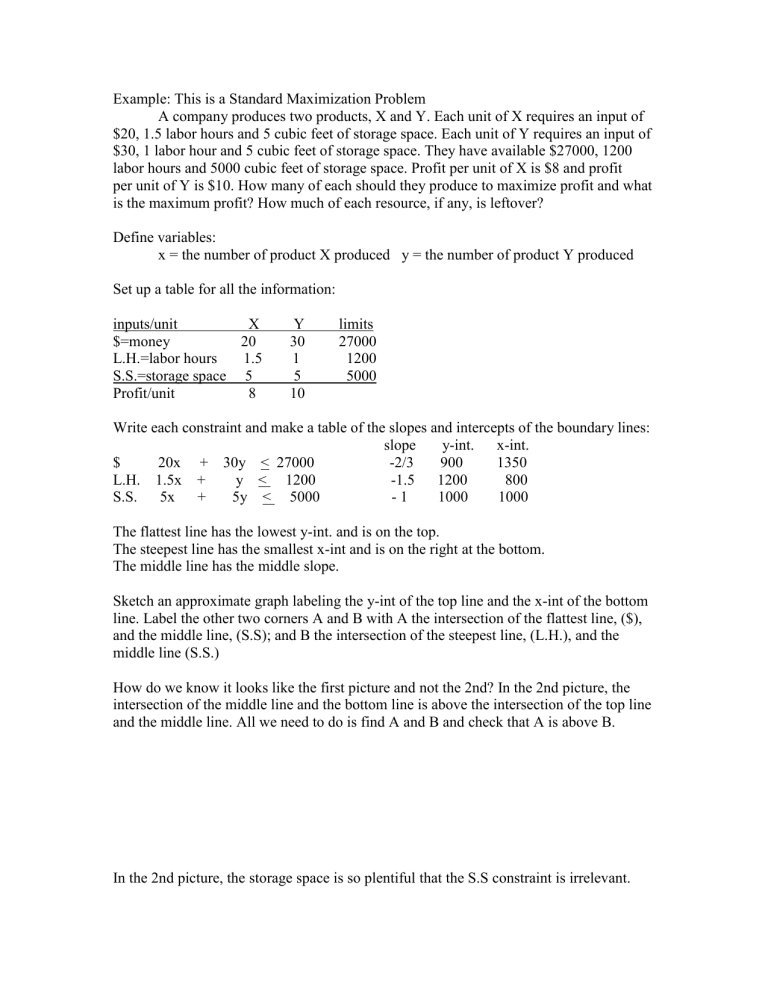
Example: This is a Standard Maximization Problem
A company produces two products, X and Y. Each unit of X requires an input of
$20, 1.5 labor hours and 5 cubic feet of storage space. Each unit of Y requires an input of
$30, 1 labor hour and 5 cubic feet of storage space. They have available $27000, 1200 labor hours and 5000 cubic feet of storage space. Profit per unit of X is $8 and profit per unit of Y is $10. How many of each should they produce to maximize profit and what is the maximum profit? How much of each resource, if any, is leftover?
Define variables: x = the number of product X produced y = the number of product Y produced
Set up a table for all the information: inputs/unit X Y limits
$=money 20 30
L.H.=labor hours 1.5 1
S.S.=storage space 5
Profit/unit
5
8 10
27000
1200
5000
Write each constraint and make a table of the slopes and intercepts of the boundary lines: slope y-int. x-int.
$ 20x + 30y < 27000 -2/3 900 1350
L.H. 1.5x + y < 1200 -1.5 1200 800
S.S. 5x + 5y < 5000 - 1 1000 1000
The flattest line has the lowest y-int. and is on the top.
The steepest line has the smallest x-int and is on the right at the bottom.
The middle line has the middle slope.
Sketch an approximate graph labeling the y-int of the top line and the x-int of the bottom line. Label the other two corners A and B with A the intersection of the flattest line, ($), and the middle line, (S.S); and B the intersection of the steepest line, (L.H.), and the middle line (S.S.)
How do we know it looks like the first picture and not the 2nd? In the 2nd picture, the intersection of the middle line and the bottom line is above the intersection of the top line and the middle line. All we need to do is find A and B and check that A is above B.
In the 2nd picture, the storage space is so plentiful that the S.S constraint is irrelevant.
Find A using rref on $ and S.S. or elimination of variables.
A(300,700)
Find B similarly using rref on S.S. and L.H. B(400, 600) We see that B is below A so the 1st picture is correct.
Make a table listing the corners and the profit at each:
corner P=8x + 10y
(0, 900) 9000
A (300,700) 9400
B (400,600) 9200
(800,0) 6400
So A(300,700) is the most profitable. They should produce 300 of X and 700 of Y for a profit of $9400.
Final step, Find the leftovers if any.
Since A is below the L.H. line, the are leftover labor hours.
Plugging A into the left side of the L.H. constraint, we have labor hours used = 1.5(300) + 700 = 1150 hours. There were 1200 available so we have
50 extra labor hours leftover.
Since A lies on each of the other constraints, there are no other leftover resources.
